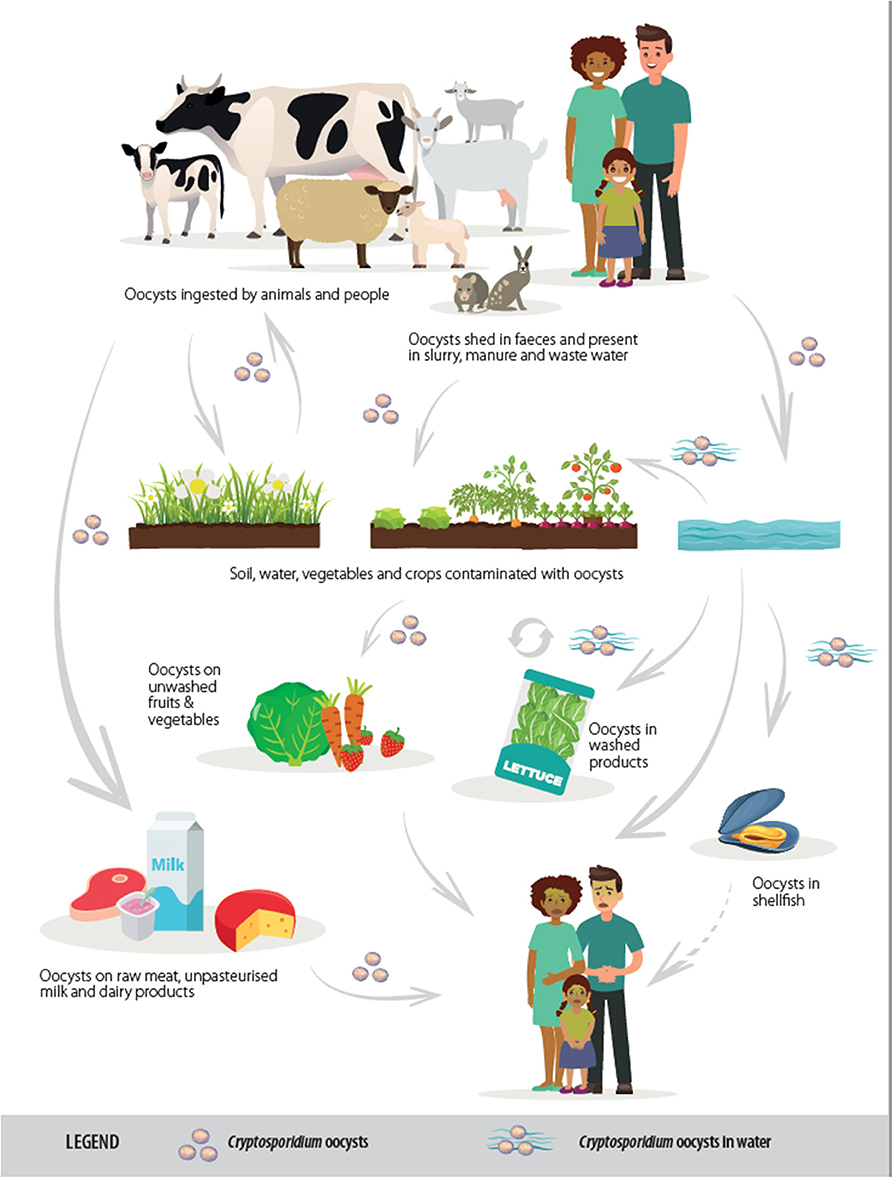Human Cryptosporidium Life Cycle | Cryptosporidium is an intracellular protozoan parasite within the phylum apicomplexa, group alveolata. The disease cryptosporidiosis is spread from person to person after the parasites are shed into the environment. A microbial biorealm page on the genus cryptosporidium parvum. Current understanding and research needs. Image from the centers for disease control and prevention image library.
Parvum in an in vitro system. Parvum) is one of the leading causes of persistent diarrhea and thus the most studied and better understood species of the genus cryptosporidium. After excysting from oocysts in the lumen. Download scientific diagram | cryptosporidium life cycle (reproduced with permission from hijjawi et al. Parvum genotype 1) are responsible for most human cases of cryptosporidiosis.
Current understanding and research needs. Parvum in an in vitro system. The life cycle is completed in the host and large numbers of oocytes are then excreted with the potential to spread the infection. Cryptosporidiosis is a type of gastroenteritis caused by a zoonotic enteric parasite of the genus cryptosporidium. Parvum) is one of the leading causes of persistent diarrhea and thus the most studied and better understood species of the genus cryptosporidium. Cryptosporidium hominis, which primarily infection with cryptosporidium spp. Cryptosporidiosis is the infection in humans and animals with cryptosporidium spp., which are protozoan, obligate intracellular parasites. Cryptosporidium parvum infects the microvilli of the small intestine of humans and other animals. The most commonly reported etiological agents of human cryptosporidiosis are cryptosporidium hominis and cryptosporidium parvum (ryan and hijjawi, 2015). This is because, in the oocyst stage of its life cycle, cryptosporidium can resist disinfection, including chlorination, and can survive for a prolonged period in the environment. Cryptosporidium parvum is a zoonotic protozoan parasite that mainly affects the ileum of humans and livestock, with the potential to cause severe enteric disease. The infection disrupts the ionic balance in the intestinal tract resulting in an overall increase in ion loss. Parvum genotype 1) are responsible for most human cases of cryptosporidiosis.
In humans, the main causes of disease are c. The disease cryptosporidiosis is spread from person to person after the parasites are shed into the environment. Other cryptosporidium species have been reported to infect humans, but less frequently (c. Cryptosporidium is phylogenetically related to toxoplasma gondii, isospora belli, and the sexual cycle also occurs in the human host and culminates when the unsporulated oocyst sheds into the gut electron microscopy reveals all phases of the sexual and asexual life cycle within the enterocyte. Two species are responsible for most human infections:

The pattern of cryptosporidium life cycle fits well with that of other intestinal homogeneous coccidian genera of the suborder eimeriina: And oocysts serving for parasites' spreading in the environment. In humans, the main causes of disease are c. Other cryptosporidium species have been reported to infect humans, but less frequently (c. A microgamont gives rise to numerous male gametes; It's during the most infectious stage of the microorganism's life cycle, called oocysts, that crypto can be passed from person to person or animal to human. The life cycle is completed in the host and large numbers of oocytes are then excreted with the potential to spread the infection. Cryptosporidium parvum is a zoonotic protozoan parasite that mainly affects the ileum of humans and livestock, with the potential to cause severe enteric disease. The parasites have a life cycle that can be completed in humans and many types of animals. General apicomplexan structure and life cycle. After ingestion of the oocyst, there is excystation (release of infective sporozoites), merogony (asexual multiplication), gametogony (gamete formation), fertilization, oocyst wall formation, and sporogony (sporozoite. Two species are responsible for most human infections: We describe the complete life cycle of c.
Other cryptosporidium species have been reported to infect humans, but less frequently (c. The infective oocysts reside in food and water (2). Oocysts are resistant to harsh conditions, including cryptosporidium parvum and c. The life cycle is completed in the host and large numbers of oocytes are then excreted with the potential to spread the infection. Cryptosporidiosis is a type of gastroenteritis caused by a zoonotic enteric parasite of the genus cryptosporidium.

After excysting from oocysts in the lumen. It's during the most infectious stage of the microorganism's life cycle, called oocysts, that crypto can be passed from person to person or animal to human. Current understanding and research needs. Human cryptosporidiosis is caused by infection with apicomplexan protozoans of the genus cryptosporidium. The most commonly reported etiological agents of human cryptosporidiosis are cryptosporidium hominis and cryptosporidium parvum (ryan and hijjawi, 2015). The infection disrupts the ionic balance in the intestinal tract resulting in an overall increase in ion loss. They are also zoonotic and thus spread between animals and human beings. Parvum in an in vitro system. Cryptosporidium parvum infects the microvilli of the small intestine of humans and other animals. This is because, in the oocyst stage of its life cycle, cryptosporidium can resist disinfection, including chlorination, and can survive for a prolonged period in the environment. And oocysts serving for parasites' spreading in the environment. In humans, the main causes of disease are c. After ingestion of the oocyst, there is excystation (release of infective sporozoites), merogony (asexual multiplication), gametogony (gamete formation), fertilization, oocyst wall formation, and sporogony (sporozoite.
Cryptosporidiosis is the infection in humans and animals with cryptosporidium spp, which are protozoan, obligate intracellular parasites cryptosporidium life cycle. Parvum genotype 1) are responsible for most human cases of cryptosporidiosis.
Human Cryptosporidium Life Cycle: Human host — hhmi biointeractive video.
Source: Human Cryptosporidium Life Cycle
comment 0 Post a Comment
more_vert